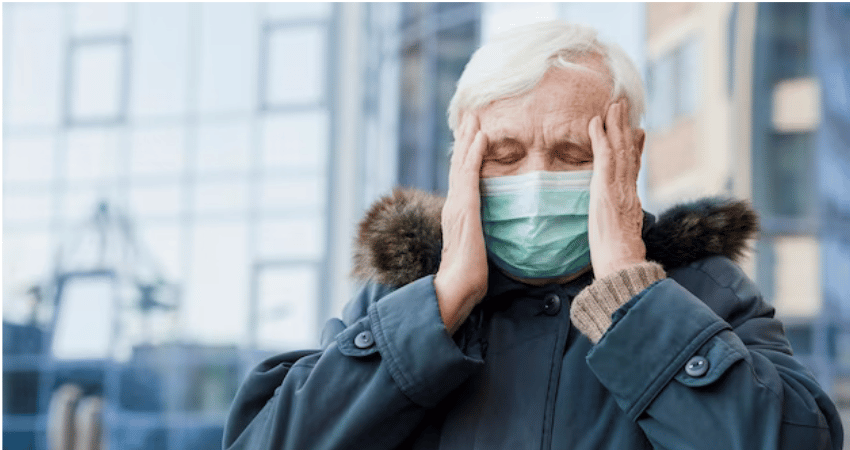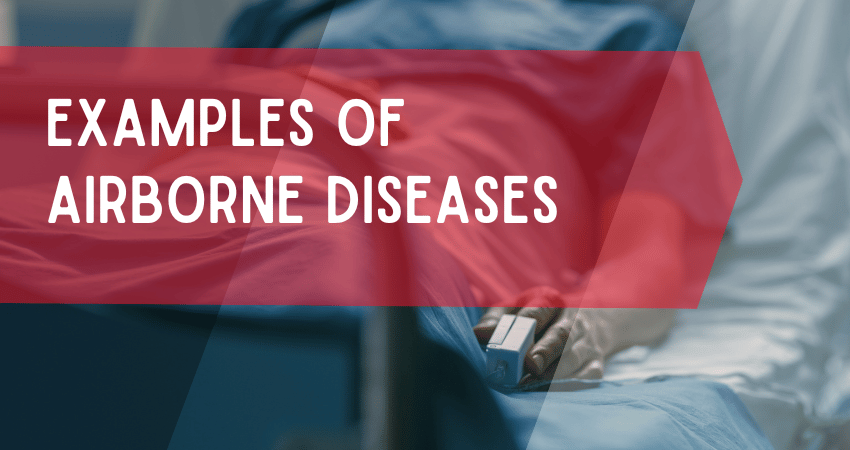Airborne diseases are a significant concern in public health due to their potential for rapid transmission. These diseases can be easily spread through the air, often via respiratory droplets, making them highly contagious. In this blog, we will explore what airborne diseases are, how they spread, their symptoms, and most importantly, provide a list of 20 examples of airborne diseases. We’ll also discuss preventive measures to protect yourself and your community from these health threats.
What are Airborne Diseases?
Airborne diseases are illnesses caused by pathogens like bacteria, viruses, or fungi that can be transmitted through the air. This transmission typically occurs when an infected person coughs, sneezes, talks, or even breathes, releasing tiny respiratory droplets into the air. If a susceptible person breathes in these contaminated droplets, they can become infected.
How are Airborne Diseases Spread?
The primary mode of transmission for airborne diseases is through respiratory droplets, but other factors can contribute to their spread. These factors include crowded or poorly ventilated spaces, close contact with infected individuals, and poor personal hygiene. Additionally, some airborne diseases can linger on surfaces, making indirect transmission possible.
Symptoms of Airborne Diseases
The symptoms of airborne diseases can vary widely depending on the specific pathogen. However, common symptoms of airborne diseases include:
- Fever
- Cough
- Sneezing
- Runny or stuffy nose
- Fatigue
- Difficulty breathing
- Sore throat
- Body aches
- Headache
Prevention of Airborne Diseases
Preventing airborne diseases is crucial to safeguard public health. Here are some general preventive measures:
- Vaccination: Many airborne diseases can be prevented through vaccination. Getting vaccinated is one of the most effective ways to protect yourself and others.
- Hand Hygiene: Regularly wash your hands with soap and water for at least 20 seconds to reduce the risk of touching your face with contaminated hands.
- Respiratory Hygiene: Cover your mouth and nose when coughing or sneezing, preferably with a tissue or your elbow. Dispose of used tissues properly.
- Wearing Masks: In situations where you may be exposed to airborne pathogens, wearing a mask can reduce the risk of inhaling infectious droplets.
- Social Distancing: Maintain physical distance from individuals who may be infected. This reduces the chances of exposure to respiratory droplets.
- Good Ventilation: Ensure proper ventilation in indoor spaces to reduce the concentration of airborne pathogens.
List of 20 Examples of Airborne Diseases:
Now, let’s explore a list of 20 examples of airborne diseases:

- Common Cold: Caused by rhinoviruses, the common cold is highly contagious and leads to a runny or stuffy nose, sneezing, and coughing.
- Influenza: The flu is caused by influenza viruses, resulting in fever, muscle aches, and respiratory symptoms.
- Chickenpox: Varicella-zoster virus causes chickenpox, which presents with an itchy rash and fever.
- Measles: Measles, caused by the measles virus, leads to a characteristic red rash, high fever, and respiratory symptoms.
- Mumps: Mumps is caused by the mumps virus and can result in swollen salivary glands and fever.
- Whooping Cough (Pertussis): Bordetella pertussis causes this disease, characterized by severe coughing fits.
- Tuberculosis (TB): Mycobacterium tuberculosis causes tuberculosis, which primarily affects the lungs.
- COVID-19: The coronavirus SARS-CoV-2 causes COVID-19, which has affected the world on an unprecedented scale.
- SARS (Severe Acute Respiratory Syndrome): SARS is caused by the SARS coronavirus and leads to severe respiratory symptoms.
- MERS (Middle East Respiratory Syndrome): MERS is caused by the MERS coronavirus and is characterized by severe respiratory symptoms.
- RSV (Respiratory Syncytial Virus): RSV can cause respiratory tract infections, especially in infants and young children.
- Adenovirus: Adenoviruses can lead to various illnesses, including respiratory infections.
- Rhinovirus: Rhinoviruses are a common cause of the common cold.
- Parainfluenza Virus: Parainfluenza viruses can lead to respiratory infections, including croup.
- Enterovirus: Enteroviruses can cause a range of illnesses, including respiratory symptoms.
- Hantavirus: Hantaviruses can lead to Hantavirus pulmonary syndrome, a severe respiratory illness.
- Legionnaires’ Disease: Caused by Legionella bacteria, this disease can result in severe pneumonia.
- Histoplasmosis: Histoplasmosis is a fungal infection that primarily affects the respiratory system.
- Coccidioidomycosis: Also known as “Valley Fever,” this disease is caused by Coccidioides fungi and affects the lungs.
- Aspergillosis: Aspergillosis is a fungal infection that can affect the respiratory system, especially in immunocompromised individuals.
Tips for Preventing Airborne Diseases
- Vaccinate: Keep up to date with vaccinations to protect yourself and those around you.
- Practice Good Hand and Respiratory Hygiene: Wash your hands regularly and follow proper coughing and sneezing etiquette.
- Maintain Social Distancing: Keep a safe distance from individuals who may be infected.
- Wear Masks When Necessary: In crowded or high-risk settings, wearing a mask can provide an extra layer of protection.
- Ventilation: Ensure that indoor spaces are adequately ventilated to reduce the concentration of pathogens.
- Deduction
- Airborne diseases pose significant health risks, and understanding their transmission and prevention is crucial. By following recommended preventive measures and staying informed about these diseases, we can collectively reduce their impact on public health. Remember that proper hygiene, vaccination, and responsible behavior are essential to combat the spread of airborne diseases.
Treatment of Airborne Diseases
The treatment for airborne diseases varies depending on the specific disease and its severity. In many cases, healthcare professionals may prescribe antiviral or antibiotic medications to manage the infection. Some diseases, such as COVID-19, may require supportive care, including oxygen therapy and hospitalization in severe cases. It is crucial to seek medical advice if you suspect you have contracted an airborne disease to receive proper care and prevent the spread to others.
Complications of Airborne Diseases
Airborne diseases can lead to a range of complications. For example, pneumonia is a common complication of many respiratory infections. Severe acute respiratory infections like SARS, MERS, and COVID-19 can result in acute respiratory distress syndrome (ARDS), which can be life-threatening. Additionally, some diseases may lead to long-term health issues, such as post-infection complications or chronic conditions.

Impact of Airborne Diseases on Public Health
The impact of airborne diseases on public health can be substantial. Outbreaks of contagious diseases can strain healthcare systems, lead to economic losses, and, in some cases, result in widespread panic and social disruption. Preventing and controlling these diseases is vital to protect public health and maintain societal stability.
Future Research on Airborne Diseases
Ongoing research on airborne diseases is essential to develop better treatments, preventive measures, and vaccines. With the emergence of new diseases like COVID-19, understanding the biology of pathogens and how they interact with the human immune system is critical for preparedness and response to future threats. Scientists and healthcare professionals continue to work tirelessly to improve our ability to combat airborne diseases.
Deduction:
Stay informed, take appropriate precautions, and follow the guidance of healthcare authorities to protect yourself and your community from these airborne health threats. Remember, knowledge and prevention are powerful tools in the fight against infectious diseases.

